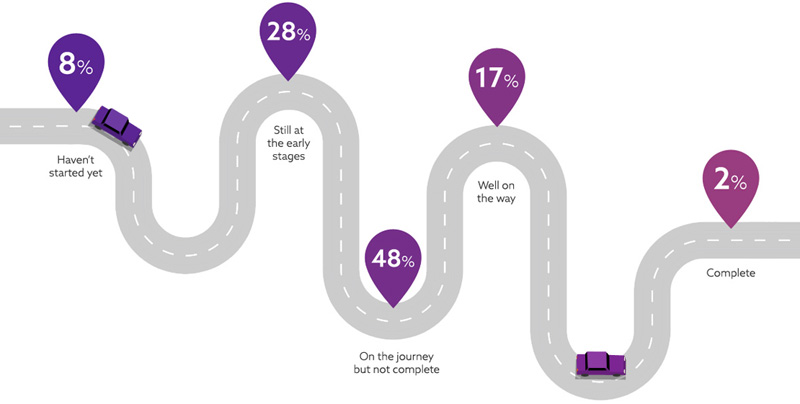Most respondents have started on a digital transformation journey. Almost two thirds (64%) say that they’ve been on this journey for some time, that they are well on the way to completing it, or that they’ve reached their destination.
If digital transformation was a journey, where is your organisation on that journey?








